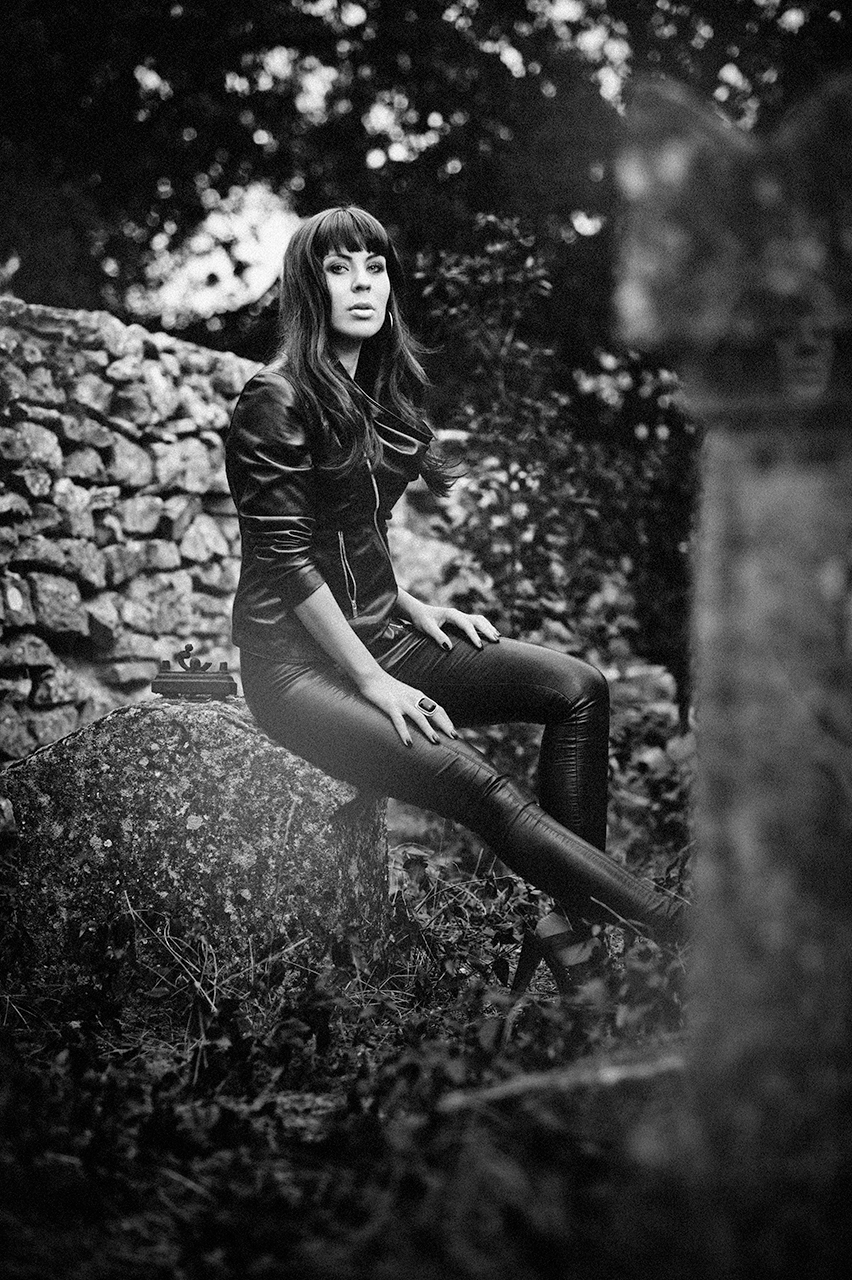Maturi e tiri le redini all’erbaccia – Ripeness pulls a weed in reins
Citiamo la poesia di Pascoli dal titolo Il vischio. Là, c’è il simbolismo della vita “fruttuosamente” giovanile, con le illusioni della spensieratezza che dovranno cadere, fra le responsabilità degli adulti. Pascoli aveva immaginato uno strano albero. In questo, i rami ormai morenti d’una vecchia fruttuosità erano stati attaccati dal vischio. Qualcosa da percepire in via “oscura”, dentro l’estetica del decadentismo. Il vischio diventava malignamente un muco, rispetto alla vecchia linfa della fruttuosità. Una pianta parassitaria ma sempreverde, così da simboleggiare bene la necessità che la giovinezza si perda. Anna è inquadrata dentro un giardino, molto abbandonato a se stesso. Lei siederebbe su una lapide, mentre a destra si scorgerà una colonna. Due elementi da percepire nel “logorio” del tempo. La grande vitalità delle erbacce paradossalmente confermerà l’abbandono del giardino. E’ la percezione (già cara a Pascoli) della spensieratezza giovanile, destinata ad “invischiarsi” fra le responsabilità degli adulti. Le gambe di Anna, ormai divenuta una donna, s’accavallano come una forbice, iniziando virtualmente a tagliare le “erbacce”. La “lapide” e la colonna si percepirebbero in via “funebre”. Ci sono però le “ventose”… delle mani, molto determinate a tirare “le redini” delle erbacce (tramite le gambe), rimuovendo ogni “cancrena” della vitalità.
We mention the poem of Pascoli called Il vischio. There is the symbolism of life “fruitfully” young, with the illusions of lightheartedness which would fall, between the responsibility of adults. Pascoli imagined a strange tree. In this one, the branches, by now dying of an old fruitfulness, were attacked by the mistletoe. Something that we perceive in a “dark” way, inside the aesthetics of Decadence. The mistletoe became maliciously a mucus, respect the old sap of a fruitfulness. That is a plant parasitic but evergreen, so able to symbolize very well the necessity that youth disappears. Anna is framed inside a garden, certainly abandoned to itself. She would sit on a gravestone, while on the right we will glimpse a column. These are two elements that we perceive in the “attrition” of time. A great vitality of the weed paradoxically will confirm the relinquishment of a garden. That’s the perception (already loved by Pascoli) of a young lightheartedness, destined to “be embroiled” between the responsibility of adults. The legs of Anna, by now become a woman, are overlapped as the scissors, virtually beginning to cut the “weed”. The “gravestone” and the column would be perceived in a “funeral” way. However there are the “suckers”… of hands, very determined to “rein” the weed (through the legs), removing every “gangrene” in the vitality.
Bibliografia consultata – Annotated bibliography:
G. BALDI, S. GIUSSO, M. RAZETTI e G. ZACCARIA, Dal testo alla storia – Dalla storia al testo, Paravia, Torino 1994, pp. 211-215
Nota biografica sugli artisti recensiti – Biographical sketch about the two artists:
Il fotografo francese Thomas Pellerin è nato a Bethune; oggi vive e lavora a Montpellier. Egli cominciò a scattare mosso dall’interesse per i paesaggi. In seguito, Pellerin svoltò la sua fotografia, verso i ritratti o la moda. Egli è principalmente ispirato dalla bellezza femminile e dal sublime.
The French photographer Thomas Pellerin was born in Bethune; now he lives and works in Montpellier. He began to shoot having an interest for the landscapes. Then, Pellerin turned his photography, into the portraits and the fashion. He is principally inspired by the woman beauty and the sublime.
www.thomaspellerin.fr
La modella Anna Reis (nata in Francia, ma d’origini portoghesi) vive e lavora in Provenza. Lei ha studiato Giurisprudenza presso l’Università di Avignone. Oggi Anna lavora come avvocato. Lei in passato posò per il fotografo Dimitri Daniloff, nella sua campagna contro la violenza sulle donne (in favore di Amnesty International). Anna ha lavorato anche per note riviste, come Elle e Marie Claire (attraverso i marchi Georges Hobeika, Max Chaoul, Metal Pointu’s, Ferrandis, Elie Kuame ecc…).
The model Anna Reis (born in France, but having a Portuguese origin) lives and works in Provence. She studied Law at University of Avignone. Actually Anna works as lawyer. In the past, she posed for photographer Dimitri Daniloff, in his campaign alerting to the problem of violence against women (helping Amnesty International). Anna worked also for famous magazines, as Elle and Marie Claire (through the brands Georges Hobeika, Max Chaoul, Metal Pointu’s, Ferrandis, Elie Kuame etc…).


+ Non ci sono commenti
Aggiungi